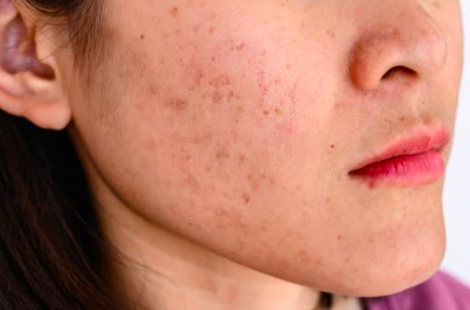 What Gives Skin Its Color?
What Gives Skin Its Color?
Melanin is a natural substance the body produces within skin, hair, and the iris of the eye. Not to be confused with melanoma (a serious form of skin cancer), melanin is a pigment that produces color.
Skin contains special cells that create this pigment. Although everyone generally has the same number of these cells, some folks simply produce more melanin than others. Genes passed down to you from your parents tend to strongly influence how much you will produce.
When exposed to sunlight, skin creates more melanin in an attempt to help protect it from damage.
What Is Melasma?
This condition results in tan or brown patches that appear in the skin, and these patches seem to enjoy showing up on the face in particular. These dark areas can manifest anywhere; they are often on the upper lip, cheeks, chin, forehead and commonly have symmetry.
Anyone may develop melasma, but it does appear more commonly in women. Hispanic, Asian, and darker Mediterranean skin tones may be especially susceptible.
What Causes It?
Common causes of melasma include:
- Hormones related to pregnancy
- Birth control pills
- Skin damage from sun exposure
How Can a Dermatologist Help With Melasma?
Fortunately, dermatologists are expertly trained to deal with this common condition. Their approaches to treatment may involve:
- Hydroquinone: This medication is applied to the skin as a lotion, gel, cream, or liquid. It works to lighten the skin.
- Corticosteroids, tretinoin: These drugs are often given as a second medication to assist lightening. In some cases, a triple cream of hydroquinone, tretinoin, a corticosteroid may be indicated.
- Other topical medications: kojic acid and azelaic acid are examples of other substances known to lighten melasma.
- Treatment procedures: If skin medications don’t do the trick, a dermatologist may opt to perform any of these treatments:
- Dermabrasion: controlled skin damage of deeper skin layers to improve the appearance
- Microdermabrasion: gentle sanding away of outer skin layers with an abrasive tool
- Chemical peel: removal of damaged skin cells with the use of a chemical substance
- Laser or light-based procedures: individual skin layer removal using focused light
Melasma can negatively impact self-image, confidence, and self-esteem. Dermatologists are ready and willing to help minimize the effects of this condition.
Complexions Dermatology is here to help with melasma and other skin conditions. Request an appointment on our website or call one of our two locations.
